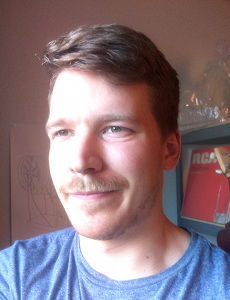| Thorsten Groh | |||||||||
|
Publications(up to 2021)
-
Demonstration of quantum brachistochrones between distant states of an atom, Phys. Rev. X (Featured in Physics) 11, 011035 (2021)arXivBibTeX ABSTRACT »
ABSTRACT »Transforming an initial quantum state into a target state through the fastest possible route—a quantum brachistochrone—is a fundamental challenge for many technologies based on quantum mechanics. Here, we demonstrate fast coherent transport of an atomic wave packet over a distance of 15 times its size—a paradigmatic case of quantum processes where the target state cannot be reached through a local transformation. Our measurements of the transport fidelity reveal the existence of a minimum duration—a quantum speed limit—for the coherent splitting and recombination of matter waves. We obtain physical insight into this limit by relying on a geometric interpretation of quantum state dynamics. These results shed light upon a fundamental limit of quantum state dynamics and are expected to find relevant applications in quantum sensing and quantum computing.
-
Fast transport of single atoms in optical lattices using quantum optimal control, (2018), MasterarbeitBibTeXABSTRACT »This thesis describes the theoretical and experimental work for reaching fast, high fidelity transport operations of single cesium atoms in a state-dependent optical lattice. By applying optimal control theory to position and depth of the optical lattice potential and using a computer simulation judging the fidelity, fast transport sequences preserving the internal atomic quantum state and preventing any motional excitation can be identified. To allow transport times down to a few microseconds the feedback control system used for steering depth and position of the optical lattice deterministically is overdriven in a controlled way. Transport induced motional excitations are measured experimentally by means of a special microwave sideband spectroscopy, which is improved to reliably detect any excitation and allows a full tomography of the vibrational states of the anharmonic optical lattice potential. Optimal control sequences allowing single site transport of atoms in the oscillation period of the trapping potential are believed to reach the fundamental quantum speed limit of the system.
-
Robustness of topologically protected edge states in quantum walk experiments with neutral atoms, Phys. Rev. A (Editors' Suggestion) 94, 013620 (2016)arXivBibTeX ABSTRACT »
ABSTRACT »Discrete-time quantum walks allow Floquet topological insulator materials to be explored using controllable systems such as ultracold atoms in optical lattices. By numerical simulations, we study the robustness of topologically protected edge states in the presence of decoherence in one- and two-dimensional discrete-time quantum walks. We also develop a simple analytical model quantifying the robustness of these edge states against either spin or spatial dephasing, predicting an exponential decay of the population of topologically protected edge states. Moreover, we present an experimental proposal based on neutral atoms in spin-dependent optical lattices to realize spatial boundaries between distinct topological phases. Our proposal relies on a new scheme to implement spin-dependent discrete shift operations in a two-dimensional optical lattice. We analyze under realistic decoherence conditions the experimental feasibility of observing unidirectional, dissipationless transport of matter waves along boundaries separating distinct topological domains.
-
Dekohärenzeffekte in topologischen Phasen von Quantenwalks, (2015), BachelorarbeitBibTeX ABSTRACT »Die Klassifizierung von Quantenwalks über topologische Phasen ermöglicht die Erklärung der Existenz geschützter Zustände an räumlichen Phasengrenzen. In dieser Arbeit wird die Einwirkung von Dekohärenzeffekten auf die Existenz und Form dieser topologisch geschützten Zuständen in Quantenwalks mit diskreter Zeit auf ein- und zweidimensionalen diskreten Gittern simuliert und untersucht. Für die zeitliche Entwicklung topologisch geschützter, lokalisierter Randzustände wird im eindimensionalen System ein einfaches Modell gefunden. Die Grenzen des verwendeten Dekohärenzmodells werden durch die Konstruktion eines dekohärenzfreien Quantenwalk-Protokolls aufgezeigt. Außerdem wer- den die Möglichkeiten und Einschränkungen einer experimentellen Realisierung von topologischen Effekten in Quantenwalks mit neutralen Atomen in optischen Gittern simuliert und analysiert.
ABSTRACT »Die Klassifizierung von Quantenwalks über topologische Phasen ermöglicht die Erklärung der Existenz geschützter Zustände an räumlichen Phasengrenzen. In dieser Arbeit wird die Einwirkung von Dekohärenzeffekten auf die Existenz und Form dieser topologisch geschützten Zuständen in Quantenwalks mit diskreter Zeit auf ein- und zweidimensionalen diskreten Gittern simuliert und untersucht. Für die zeitliche Entwicklung topologisch geschützter, lokalisierter Randzustände wird im eindimensionalen System ein einfaches Modell gefunden. Die Grenzen des verwendeten Dekohärenzmodells werden durch die Konstruktion eines dekohärenzfreien Quantenwalk-Protokolls aufgezeigt. Außerdem wer- den die Möglichkeiten und Einschränkungen einer experimentellen Realisierung von topologischen Effekten in Quantenwalks mit neutralen Atomen in optischen Gittern simuliert und analysiert.
Forschungsgebiete
Unsere Gruppe
Veröffentlichungen
Abgeschlossene Projekte
Lehre
Weitere Informationen
Anmeldung
Vorträge
- Curtius Lectures
- 03/05/22 - 06/05/22










